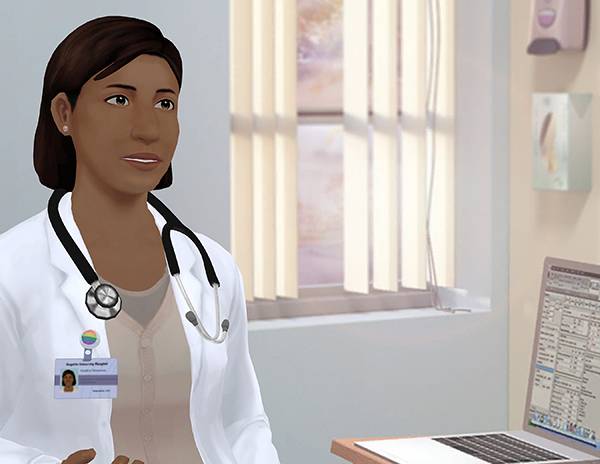You are here
CDC Foundation Launches TINA, an Innovative Virtual Tool to Improve Cancer Patient-Provider Conversations about Infection Risk
Preventing Infections in Cancer Patients program, supported by Amgen, provides resources for cancer patients, caregivers and healthcare professionals to reduce risk of infection during cancer treatment
ATLANTA—The CDC Foundation today launched the first educational tool using virtual human technology to improve patient-provider conversations about a side effect of chemotherapy that may increase infection risk, known as neutropenia. This innovative new resource is part of the Preventing Infections in Cancer Patients (PICP) program, which has been led by the Centers for Disease Control and Prevention (CDC) and the CDC Foundation since 2009, with financial support from Amgen.
Patient-clinician communication plays an important role in optimizing health outcomes, and is especially important in the cancer setting due to the levels of stress, uncertainty and complex information involved. Virtual humans, like those featured in the application, are ideally suited to creating safe, engaging and non-confrontational experiences that promote meaningful changes in behavior.
Available as a free mobile app and on PreventCancerInfections.org, TINA features two separate role-play conversations in which providers and patients interact with and learn from fully articulated and emotionally responsive virtual humans:
- TINA‒Training for Infection and Neutropenia Awareness, offers providers a safe and realistic training environment to practice meaningful and appropriate conversations with cancer patients about neutropenia;
- TINA‒Talking about Infection and Neutropenia Awareness, introduces patients to a virtual provider, TINA, who will answer their questions about infection risk and the steps they can take to protect themselves.
“People dealing with a cancer diagnosis are incredibly overwhelmed with information, yet learning about the steps they can take to lower their risk of infection during chemotherapy is critical,” explained Lisa Richardson, MD, MPH, director of CDC’s Division of Cancer Prevention and Control. “TINA is the first-ever tool developed to engage both patients and providers in an educational and informative way. Our hope is that TINA can help facilitate more effective communication about this serious side effect of chemotherapy.”
Each year, more than half a million patients with cancer are treated with chemotherapy, and according to CDC, infections that are linked to neutropenia are some of the most serious side effects, which can lead to hospitalization, disruption in treatment, or even death. Based on the latest data available from 2012, more than 108,000 adults and children in the United States with cancer were hospitalized because of neutropenia.
“We are grateful to Amgen for their support of the Preventing Infections in Cancer Patients program since 2009,” said Judith Monroe, MD, president and CEO of the CDC Foundation. “It is our hope that this innovative new tool will provide cancer patients with a new way of understanding the steps they can take to protect themselves from infection.”
About The CDC Foundation
The CDC Foundation helps the CDC save and improve lives by unleashing the power of collaboration between CDC, philanthropies, corporations, organizations and individuals to protect the health, safety and security of America and the world. The CDC Foundation is the sole entity authorized by Congress to mobilize philanthropic partners and private-sector resources to support CDC’s critical health protection mission. Since 1995, the CDC Foundation has launched approximately 1,000 programs and raised over $740 million. The CDC Foundation managed over 300 CDC-led programs in the United States and in more than 130 countries last year. Follow the Foundation on Twitter, Facebook, LinkedIn and Instagram.
About the Centers for Disease Control and Prevention (CDC)
CDC works 24/7 protecting America’s health, safety and security. Whether disease start at home or abroad, are curable or preventable, chronic or acute, or from human activity or deliberate attack, CDC responds to America’s most pressing health threats. CDC is headquartered in Atlanta and has experts located throughout the United States and the world.
For more information, visit www.cdc.gov and follow us on www.twitter.com/CDCgov.
